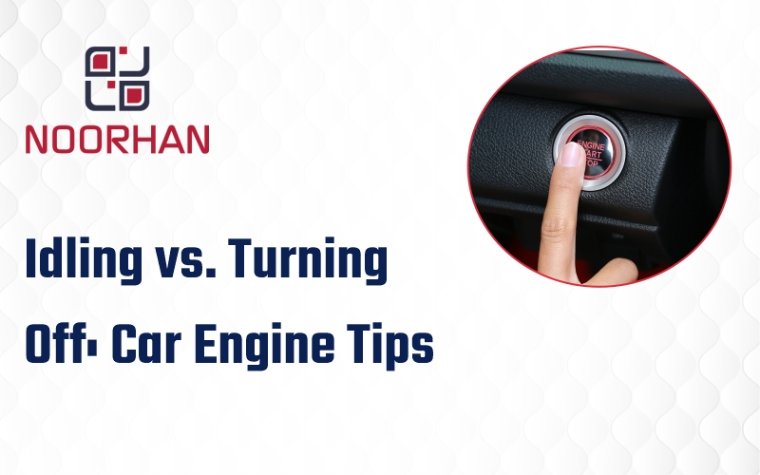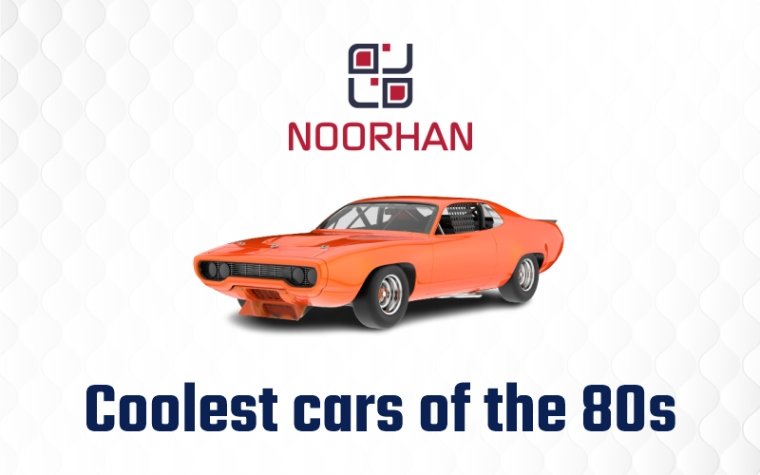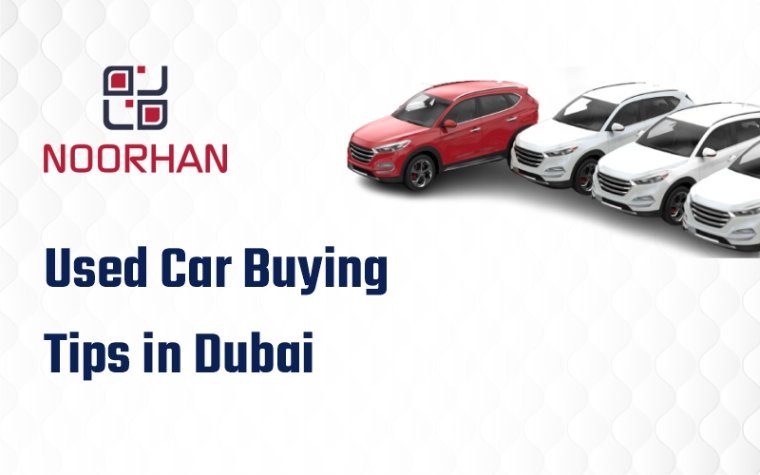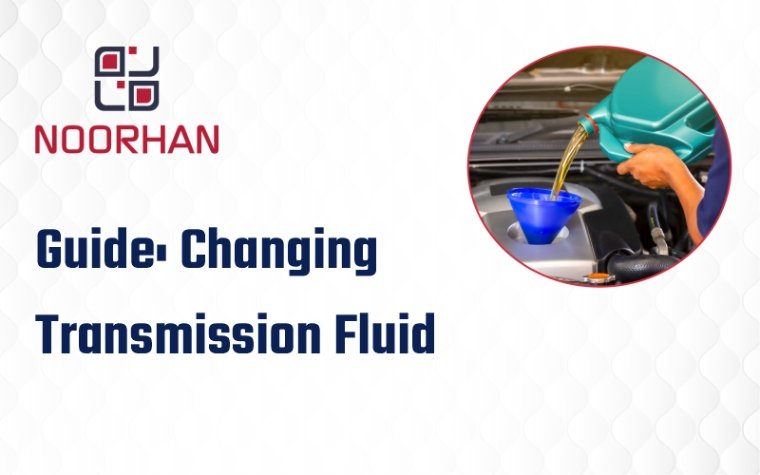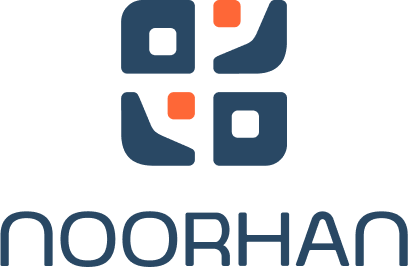-
Introduction to V2X CommunicationIntroduction to V2X Communication
-
Dubai's 620 Intersection OverhaulDubai's 620 Intersection Overhaul
-
Safety Benefits of V2XSafety Benefits of V2X
-
Tech Integration & CompatibilityTech Integration & Compatibility
-
Comparing Regional ImplementationsComparing Regional Implementations
-
FAQFAQ
-
Impact on UAE DriversImpact on UAE Drivers
Vehicle-to-Everything technology enables vehicles to communicate with infrastructure, other vehicles, and road users within 300 meters. Dubai’s Roads and Transport Authority plans to deploy V2X systems across 620 intersections between 2027 and 2028, positioning the emirate as a leader in connected vehicle technology.
This communication system addresses limitations in traditional safety technologies by providing 360-degree awareness that extends beyond camera and sensor detection. For UAE residents navigating Sheikh Zayed Road, Al Khail Road, and Emirates Road, V2X technology creates predictive safety measures rather than reactive responses to immediate dangers.
The technology operates through dedicated communication networks that exchange critical safety information in milliseconds, enabling vehicles to anticipate potential conflicts before they develop into emergency situations. This represents a shift from current safety systems that respond to existing dangers. V2X benefits include improved intersection safety, reduced collision rates, and enhanced protection for vulnerable road users throughout Dubai’s transportation network.
Understanding V2X Communication Technology
Core Communication Principles
Vehicle-to-everything technology enables cars, trucks, buses, and infrastructure to exchange safety information through specialized communication networks. This happens 10 to 100 times faster than human reaction speeds and significantly quicker than traditional radar or camera systems that must detect, process, and interpret visual information.
The technology operates through dedicated short-range communication or cellular networks that transmit Basic Safety Messages multiple times per second. Unlike conventional driver assistance systems limited by line-of-sight restrictions, V2X detects hazards around corners, through vehicles, and into blind spots by receiving direct data broadcasts from other road users.
V2X Communication Types
Vehicle-to-Vehicle Communication
Vehicle-to-vehicle communication allows cars to share real-time data about sudden braking, lane changes, and emergency maneuvers, helping prevent rear-end collisions and side-swipe accidents.
Vehicle-to-Infrastructure Communication
Vehicle-to-infrastructure systems connect with traffic signals, road signs, and smart intersections to optimize traffic flow while warning drivers about red light violations, construction zones, and hazardous road conditions. This infrastructure communication provides advance notice of changing traffic patterns for intersection management.
Vehicle-to-Pedestrian Communication
Vehicle-to-pedestrian technology protects vulnerable road users through smartphone applications or wearable devices that broadcast their location to approaching vehicles. This becomes valuable in Dubai’s busy pedestrian zones around major shopping and residential areas.
Vehicle-to-Network Communication
Vehicle-to-network connectivity enables cloud-based services including real-time traffic rerouting, weather warnings, and emergency vehicle notifications transmitted across cellular networks to vehicles outside immediate radio range.
How V2X Prevents Accidents
Predictive Safety Measures
The accident prevention capabilities stem from predictive rather than reactive safety measures. Traditional collision avoidance systems respond to dangers already present, while V2X technology anticipates potential conflicts before they develop into emergency situations.
Real-Time Communication Benefits
When a vehicle several cars ahead suddenly brakes on a major highway, V2X broadcasts this information instantly to all following vehicles, enabling smooth speed adjustments instead of panic braking that causes chain-reaction collisions. This communication happens faster than visual detection and processing.
Intersection Safety Enhancement
Research indicates V2X systems can identify collision scenarios before impact occurs, providing enough time for automatic emergency braking or driver intervention. At intersections where significant percentages of accidents occur, V2X-equipped traffic signals communicate phase timing allowing vehicles to adjust speed when approaching intersections.
Dubai's 620 Intersection Transformation Project
Project Scope and Implementation
Comprehensive V2X Deployment
Dubai’s Roads and Transport Authority announced comprehensive vehicle-to-everything deployment covering 620 signalized intersections throughout the emirate. This represents one of the world’s most extensive smart intersection projects, positioning Dubai among global leaders in connected vehicle technology.
Network Coverage Areas
The project covers traffic signals across Dubai from Deira and Bur Dubai to Dubai Marina, Jumeirah, and Dubai Silicon Oasis. This creates a unified network where vehicles communicate with traffic infrastructure along major corridors including Sheikh Zayed Road, Al Khail Road, Emirates Road, and Mohammed bin Zayed Road.
Traffic Systems Integration
The V2X network serves as a core component of Dubai’s traffic signal operations integrated into the Dubai Intelligent Traffic Systems Centre. This integration uses artificial intelligence to improve signal performance while providing real-time communication with connected vehicles.
Implementation Timeline and Challenges
Infrastructure Preparation
Infrastructure preparation focuses on upgrading traffic signal cabinets, installing roadside communication units, and deploying cameras capable of detecting vehicles, pedestrians, and cyclists in real time. The technical foundation includes establishing secure communication protocols, cybersecurity frameworks, and data management systems.
Technical Challenges
Implementation challenges include ensuring cybersecurity protection against malicious interference, coordinating with multiple vehicle manufacturers for compatibility standards, and training traffic management personnel on new system operations.
Driver Access Methods
V2X safety benefits become available to drivers through dashboard displays, mobile applications, and factory-installed systems in new vehicles. RTA coordinates with international automakers to ensure vehicles sold in UAE markets include V2X compatibility, while aftermarket devices enable older vehicles to participate in the connected safety network.
Integration with Smart City Infrastructure
Smart City Connectivity
The 620-intersection deployment connects with Dubai’s broader smart city initiatives including urban planning and clean energy strategies. Digital twin technology allows RTA engineers to simulate traffic scenarios and test operational decisions in virtual environments before implementing changes on actual roads.
Multi-Modal Transportation
Multi-modal mobility support enables data exchange between private vehicles, public buses, taxis, and eventually autonomous vehicles through standardized technology. This approach positions Dubai to leverage V2X across all transportation modes rather than isolated vehicle-specific implementations.
Measurable Safety Benefits from V2X Technology
Accident Reduction Capabilities
Crash Prevention Statistics
Research from transportation safety organizations indicates V2X-based systems could prevent significant percentages of crashes involving non-impaired drivers. This translates to substantial life-saving potential across roadways where traffic fatalities occur regularly.
Emergency Vehicle Protection
V2X communication enables advance warning systems that alert drivers to approaching emergency vehicles, allowing proper lane changes and speed reductions before emergency responders become visible. This protection reduces accidents involving ambulances, fire trucks, and police vehicles during emergency response operations.
Red Light Violation Prevention
The technology identifies red light running scenarios and broadcasts warnings to cross-traffic about potential violations. V2X-equipped intersections detect vehicles approaching too fast to stop safely and alert crossing traffic about probable red light violations before collisions occur.
Vulnerable Road User Protection
Pedestrian and Cyclist Safety
Pedestrian and cyclist safety receives enhanced protection through specialized V2X applications. Smartphones and wearable devices can broadcast pedestrian locations to approaching vehicles, while dedicated infrastructure detects cyclists and communicates their presence to nearby traffic.
School Zone Safety
School zone safety applications automatically adjust traffic signal timing when children are present and broadcast enhanced warnings to approaching vehicles. Construction zone protection provides advance warning about lane closures, reduced speed limits, and worker presence.
Emergency Vehicle Priority
Emergency vehicle preemption enables ambulances, fire trucks, and police vehicles to communicate their approach to traffic signals, providing green light priority while warning other drivers to yield appropriately.
Intersection Safety Improvements
Intersection Accident Prevention
Intersection-related accidents represent significant percentages of traffic fatalities and injuries. V2X technology addresses multiple intersection safety challenges through direct communication between vehicles and traffic infrastructure.
Left Turn Safety Assistance
Left turn assist applications warn drivers about oncoming traffic in opposite-direction left turn scenarios. The system detects approaching vehicles and calculates whether safe turning gaps exist, preventing drivers from attempting dangerous left turns.
Traffic Signal Optimization
Traffic signal timing information allows drivers to adjust speed appropriately when approaching intersections. Vehicles receive countdown information about signal changes, reducing aggressive acceleration and sudden braking near intersections.
Technological Integration and Compatibility
Current Vehicle Integration
Factory-Installed Systems
Modern vehicles increasingly include factory-installed V2X communication capabilities as standard equipment. Automotive manufacturers integrate these systems into dashboard displays, heads-up displays, and smartphone connectivity platforms.
Aftermarket Solutions
Aftermarket solutions enable older vehicles to access V2X communication through portable devices, smartphone applications, and retrofitted dashboard systems. These solutions ensure broader vehicle participation in the safety network regardless of vehicle age or manufacturer.
Complementary Safety Technologies
Vehicle-to-everything systems complement rather than replace existing safety technologies. Camera and radar systems provide immediate detection of visible obstacles while V2X communication reveals hidden vehicles, distant hazards, and other drivers’ intentions beyond sensor range. This combination creates layered protection impossible with either technology alone.
Redundant Safety Systems
Traditional safety systems continue operating as redundant detection methods while V2X adds predictive capabilities and extended awareness. This redundancy ensures safety even if individual systems experience temporary failures or limitations.
Future Technology Evolution
Communication Advancement
Connected vehicle technology continues evolving with improvements in communication speed, range, and reliability. Next-generation systems will integrate with autonomous vehicle development and smart city infrastructure expansion.
Artificial Intelligence Integration
Artificial intelligence integration enhances V2X capabilities by analyzing communication patterns and predicting potential safety scenarios before they develop. Machine learning algorithms improve system performance over time based on real-world operating experience.
5G Network Enhancement
5G cellular networks provide enhanced connectivity supporting more sophisticated vehicle-to-everything applications including high-definition mapping, real-time route optimization, and coordination with traffic management centers.
Regional Implementation Comparison
Global V2X Deployment Status
International V2X Approaches
Several regions worldwide demonstrate varying approaches to V2X implementation. China leads in deployment scale with thousands of equipped intersections across major cities, while European Union focuses on standardization and interoperability between member countries.
Regional Development Strategies
United States deployment emphasizes safety applications and federal coordination through Department of Transportation initiatives. Japan pursues integration with autonomous vehicle development and aging population mobility needs.
Dubai’s Competitive Position
Dubai’s 620-intersection project positions the emirate competitively among these global leaders while addressing specific regional needs including extreme weather performance and multi-cultural driving patterns.
Regional Adaptation Requirements
Environmental Considerations
UAE implementation requires adaptations for extreme heat conditions, sandstorm visibility challenges, and diverse international driving behaviors. Communication systems must operate reliably in temperatures exceeding 50°C while maintaining consistent performance during weather events.
Cultural Adaptations
Cultural considerations include multilingual communication support and accommodation for varying driving styles from international residents. These adaptations ensure V2X remains effective across Dubai’s diverse population.
Infrastructure Protection
Infrastructure hardening protects communication equipment from sand ingress and thermal stress while maintaining reliable operation year-round. These environmental considerations influence system design and deployment strategies.
Frequently Asked Questions
What makes V2X technology safety benefits different from current car safety features?
V2X provides information that onboard sensors cannot obtain, including hidden vehicles, distant hazards, and other drivers’ intentions beyond visual range. Current safety features like cameras and radar detect only visible objects within sensor range, while V2X receives direct communication about conditions around corners, through vehicles, and beyond sight lines. This creates predictive safety awareness rather than reactive responses.
How do V2X technology safety benefits work at Dubai's 620 intersections?
Dubai’s V2X deployment enables vehicles to communicate directly with traffic signals and infrastructure at 620 intersections. Vehicles receive real-time information about signal timing, allowing drivers to adjust speed appropriately before reaching intersections. The system also detects pedestrians, cyclists, and emergency vehicles, broadcasting warnings to approaching traffic for improved safety. These benefits become active automatically when vehicles enter communication range.
Will older vehicles access V2X technology safety benefits?
Aftermarket devices enable older vehicles to participate in V2X communication networks and access safety benefits. These devices connect to smartphone applications or dashboard displays providing safety alerts and intersection information. While factory-installed systems offer more integration, retrofit options ensure broader vehicle participation in the safety network.
How does V2X protect privacy while delivering safety benefits?
V2X systems broadcast only anonymous safety data including general location, speed, direction, and vehicle size without identifying specific vehicles or drivers. Messages transmit within 300-meter range for approximately 5 seconds before disappearing, never stored in databases tracking individual movements. This approach delivers safety benefits while protecting personal privacy.
What happens if V2X communication fails during operation?
Vehicles continue operating safely using existing safety systems including cameras, radar, and driver assistance features. V2X provides additional safety information but does not replace fundamental vehicle safety systems. Multiple redundant communication methods ensure continued operation even if individual communication channels experience temporary interruptions.
How do V2X technology safety benefits compare to autonomous vehicle capabilities?
V2X communication enhances autonomous vehicle capabilities by providing information beyond onboard sensor range. Self-driving vehicles benefit from receiving data about hidden obstacles, other vehicles’ intentions, and traffic infrastructure status. V2X serves as an additional information source supporting both human drivers and autonomous systems rather than competing with them.
Implementation Benefits for UAE Drivers
Dubai’s Transportation Leadership
Innovation Commitment
Dubai’s commitment to deploying V2X technology across 620 intersections demonstrates the emirate’s leadership in transportation innovation. The measurable safety benefits preventing crashes through enhanced awareness, faster communication, and predictive hazard detection address fundamental limitations of human drivers and traditional safety systems.
Enhanced Safety for Residents
For UAE residents traveling daily across Business Bay, Dubai Marina, Sheikh Zayed Road, and throughout the emirate’s road network, the implementation timeline means enhanced safety protection will become standard for all road users. V2X benefits include accident prevention, life-saving capabilities, and new standards for transportation infrastructure.
Comprehensive Safety Network
System-Wide Protection
V2X benefits extend beyond individual vehicles to create a comprehensive safety network protecting pedestrians, cyclists, and all road users. This system-wide approach to traffic safety positions Dubai as a model for smart city transportation development worldwide.
Future Transportation Safety
Vehicle-to-everything communication represents the future of transportation safety, moving from reactive accident response to proactive accident prevention. Dubai’s 620-intersection deployment provides the foundation for this safety transformation across the emirate’s transportation network.
Disclaimer
Information Accuracy
The information presented in this article about V2X technology safety benefits and Dubai’s 620 intersection deployment project is based on publicly available sources and industry research current at the time of publication. Technology specifications, implementation timelines, and safety statistics may change as projects develop and new research emerges.
Professional Consultation
This content serves informational purposes and should not replace professional consultation regarding vehicle safety systems, traffic regulations, or transportation planning decisions. Readers should verify current information with official sources including Dubai’s Roads and Transport Authority and vehicle manufacturers before making technology-related decisions.
Technology Limitations
While V2X technology offers significant safety benefits, no transportation safety system guarantees complete accident prevention. Drivers remain responsible for safe vehicle operation, adherence to traffic laws, and maintaining awareness of road conditions regardless of available technology assistance.
Conclusion
Transforming Transportation Safety
V2X technology represents a fundamental advancement in transportation safety, moving beyond reactive crash response to proactive accident prevention through vehicle-to-everything communication. Dubai’s ambitious deployment across 620 intersections positions the emirate as a global leader in smart transportation infrastructure while addressing real safety challenges faced by UAE residents daily.
Comprehensive Safety Enhancement
The multi-layered approach combining vehicle-to-vehicle, vehicle-to-infrastructure, vehicle-to-pedestrian, and vehicle-to-network communication creates unprecedented safety awareness that extends far beyond traditional sensor limitations. This comprehensive network protects all road users including drivers, pedestrians, cyclists, and emergency responders through predictive safety measures rather than reactive responses.
Regional Innovation Leadership
Dubai’s V2X implementation demonstrates the emirate’s commitment to transportation innovation while addressing specific regional challenges including extreme weather conditions, diverse driving behaviors, and rapid urban development. The project’s scale and comprehensive approach establish Dubai as a model for smart city transportation development worldwide.
Future Transportation Evolution
As connected vehicle technology continues evolving with artificial intelligence integration, 5G network enhancement, and autonomous vehicle development, Dubai’s V2X foundation provides the infrastructure necessary for future transportation safety advances. The 620-intersection network creates a comprehensive platform supporting current safety needs while enabling future technology integration.
The transformation from reactive accident response to proactive accident prevention through V2X technology safety benefits represents the future of transportation safety. Dubai’s comprehensive deployment provides the foundation for sustained safety improvements across the emirate’s transportation network, establishing new standards for urban mobility and traffic safety worldwide.

